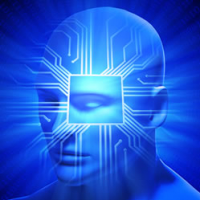Artificial Intelligence: The Next Big Thing to Watch

Artificial intelligence (AI) is a term that's been a part of computer classes for over a decade now, but it was merely theory then. The practice of artificial intelligence is becoming more mainstream today. Artificial intelligence is the application of computer systems to tasks that would normally require human intelligence—such as the ability to make decisions, recognize speech and vision, learn, and un-learn.
It's a common myth that AI is all about science fiction, the age of robots and things beyond comprehension of our day-to-day activitie, but it is quite the opposite. While AI encompasses all of that, its scope is much larger and covers some of our core daily activities too. For instance, when we watch Netflix, the recommendations we get based on our preferences and past views is machine learning at use—AI in real time.
Since AI is essentially what we program a system to do, its applications are endless and a lot more practical than we’ve often envisioned. For example, a business could leverage AI to define its weekly employee shift schedule while taking into account their changing availabilities.
Although we use AI all the time, we often don't realized that it's AI because of misconceptions we hold. In fact, the person who coined the term artificial antelligence in 1956 has said that once the system works, people don’t call it AI anymore.
AI has three large sub categories—ArtificiaI Narrow Intelligence, ArtificiaI General Intelligence, and Artificial Superintelligence—depending on what task the system has been designed to perform. In the highest possible application of super intelligence, the system is actually performing tasks better than the best of the brains in that discipline could, as the system has been designed to work through and process a very large volume of data.
If AI has existed for several decades, why is it suddenly gaining popularity now? Cheap computing and processing systems, big data, and improved algorithms to solve problems of varying levels are why the world of AI is seeing a breakthrough. A lot of research investments are also being made in AI. Paul Allen has been investing in this space for over a decade and has recently made some prominent hires to additionally support the cause.
Recently, research at UC Santa Barbara experienced a phenomenal breakthrough for AI when a circuit of one hundred artificial synapses did an image classification task. Growth in supported technologies and the awareness of what really AI is are giving AI a facelift. AI is certainly the next big thing to watch in the coming years—especially when its applications can benefit end users.

